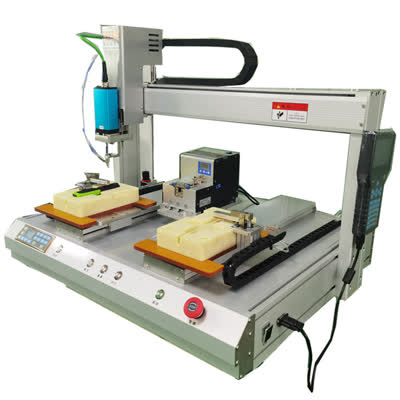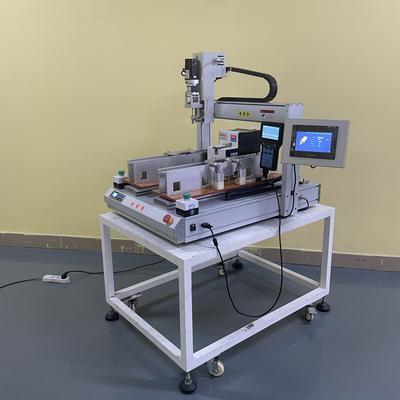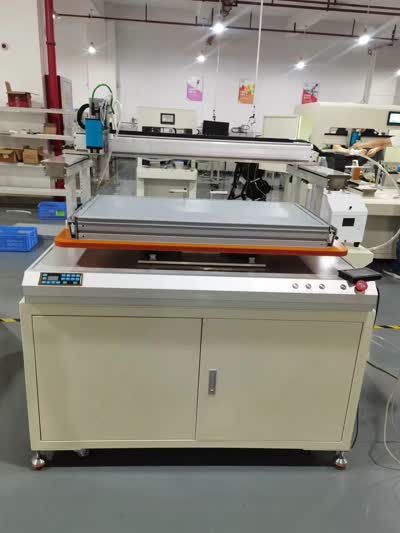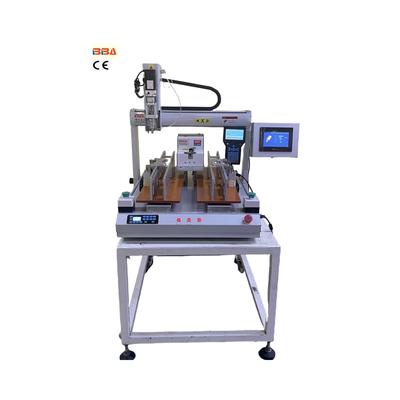Automatic Screw Locking Machine Safety Operation Guide | Industrial Equipment Maintenance & Technical Specifications
Automatic screw locking machines significantly enhance efficiency in industrial assembly operations, proper safety protocols prevent accidents and ensure consistent performance. Here are key guidelines for maximizing operational safety:
Conduct Pre-Operation InspectionsThoroughly examine pneumatic connections, screw feeders, and tightening paths before starting. Verify vacuum pressure levels and ensure all moving components clear obstructions. Test emergency stop functionality to confirm immediate response.
Utilize Proper Personal Protective EquipmentAlways wear ANSI-approved safety glasses with side shields to prevent fastener ricochets. When exposed to high-noise environments, use hearing protection rated above 25dB NRR. Anti-slip footwear is mandatory during material handling near equipment.
Maintain Clean Work ZonesImplement a 3-foot unimpeded area around machinery to eliminate trip hazards. Immediately remove metal shavings, loose screws, or spilled lubricants using non-static brushes. Designate specific locations for screw-loading operations to prevent feeding errors.
Master Lockout/Tagout ProceduresBefore servicing or clearing jammed screws, completely isolate energy sources following OSHA-compliant protocols. Apply physical locking devices and visible tags to all control points. Confirm energy discharge using verified testing equipment prior to contact.
Schedule Regular Maintenance CyclesPerform torque calibration checks every 500 operating hours using certified instruments. Replace worn feeder tracks monthly and lubricate guide rails bi-weekly with manufacturer-specified grease. Maintain dated maintenance logs documenting all servicing events.
Practice Controlled Operation HandlingOperate triggers using smooth, deliberate motions - avoid jerky manual inputs when guiding screw positions. Never override auto-stop sensors or make mechanical modifications without engineers’ authorization. Keep both hands clear of clamping zones during cycles.
Implement Preventive Fatigue ManagementRotate operators every 90 minutes during high-volume runs. Design workstations with adjustable-height monitors at eye level to minimize awkward postures. Install anti-fatigue flooring in areas requiring standing operations.
Enable Continuous Safety MonitoringPosition convex mirrors at blind-spot corners to enhance environmental awareness. Mount clearly visible strobe lights that activate during machine motion. Utilize fail-safe sensors that halt operations when unexpected resistance exceeds preset thresholds.
Maintain Comprehensive Emergency PreparednessConduct quarterly drills demonstrating rapid shutdown sequences for ejector malfunctions or torque overloads. Display color-coded emergency procedures including first-aid protocols for puncture wounds near machinery zones.
Prioritize Ongoing Operational TrainingRequire annual recertification covering updated safety protocols and software features. Train technicians for detailed failure-analysis using error-code diagnostics. Simulate worst-case scenarios demonstrating coordinated emergency responses.
While automated systems improve production rates dramatically, operators remain critical to workplace safety. Consistent adherence to these evidence-based precautions transforms screw locking machines into reliable production assets. Remember: Complacency invites accidents, while diligence builds sustainable safety cultures benefiting everyone.
| Product Name | Applicable industries |
| Screw Locking Robot | Telecommunication Equipment Assembly |



